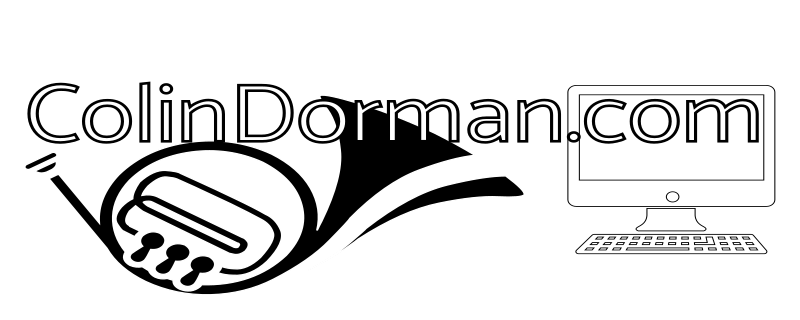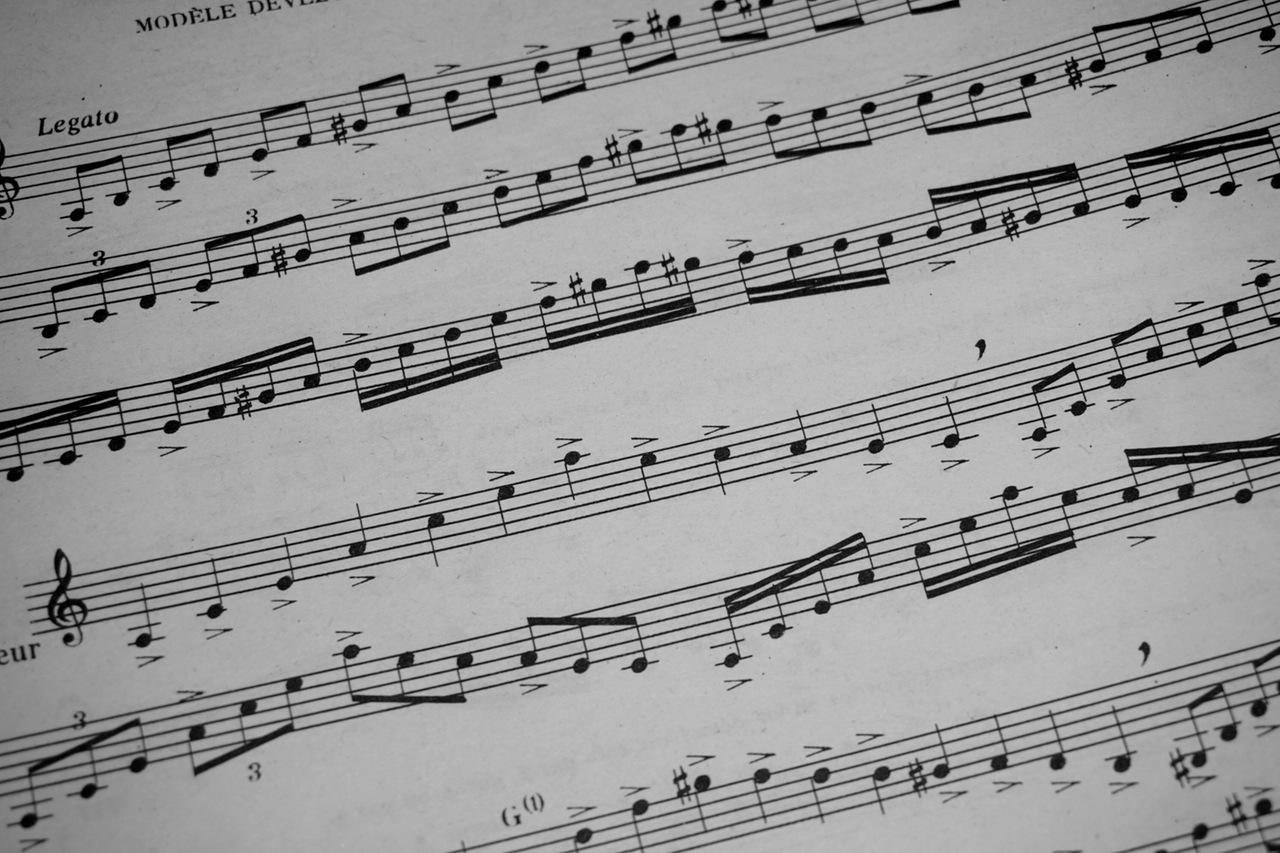It’s been few years since I last wrote up my thoughts about the best tablet device if you’re interested in moving away from paper music, so I thought I would update my recommendations for digital music tablets.
Important Features to Consider
Reading sheet music on a tablet is a relatively small niche for tablets, so I thought going over what I think are the most important features to look for might be useful.
This is not meant to be an authoritative list, but simply an insight into what to look for when you’re shopping for a tablet for sheet music reading. This is especially important if you’re looking at older tablets, since many older models are perfectly functional for sheet music reading, although they may be lacking some of the “bells and whistles” of newer models, many of those newer features aren’t actually useful to reading music.
Screen
Obviously, the most important thing is the tablet’s screen. A bigger screen makes the sheet music closer in size (or larger than) the music on a standard 8 1/2 x 11 inch sheet of paper. The screen size is especially if you use the tablet in landscape mode.
While you can use smaller tablets for music readers (my first experiment with using a tablet for music involved a Nexus 7 tablet), you really want the biggest screen size that is practical.
In addition to screen size, however, there are a few other screen-related features to consider:
- Screen brightness: This can be tricky to figure out sometimes. You want to look for the maximum brightness (in nits), where higher is better. However, make sure you’re looking at the measurement for “full screen” brightness – many modern tablets have HDR screens that can exceed the full screen brightness, but only in small areas of the screen (like if you’re watching a movie). Full screen brightness tells us how high we can turn up the brightness on a mostly-white screen (like a page of music). A higher maximum brightness is especially important if you play outside a lot. An antireflective coating is also a big help if you’ll be playing outdoors.
- Screen type: The two primary types of screen technology are LCD and OLED. LCD screens are generally less expensive, have higher full-screen brightness levels, and lower overall power consumption, but often have smaller viewing angles and are a bit thicker. OLED screens have “perfect” blacks and high contrast, better viewing angles and brighter colors and faster response time, but they can suffer from burn-in, may have a lower maximum brightness, and will use more energy if all (or most) of the pixels are on. Generally speaking, although it’s older technology, LCD is totally fine (and maybe preferred) for music reading – it can get brighter, it has no risk of burn-in, and since a page of music is mostly white, the LCD will be more power-efficient. Most high-end tablets are shipping with OLED screens, but there are advantages to older technology here.
- Pixel density: Higher is better. More pixels-per-inch (PPI) makes the notation appear crisp and readable, especially important if you’re looking at full scores on a tablet.
- Aspect ratio: Ideally, you want an aspect ratio close to 4:3, which will come closer to standard sheet music. Some tablets designed for media or gaming approach 16:9 or 16:10, which can leave a lot of (unused) white space at the top and bottom when in portrait, and will be too short when in landscape.
- Screen refresh rate: A lot has been made about this for phone and tablets recently, but it’s essential a non-issue for reading music. A slower 60hz refresh rate is fine, since music stays on screen for several seconds or minutes when playing. One interesting feature is a variable refresh rate – this can help conserve processing power if the screen will display the same static image or document for awhile.
General Performance
At its heart, using a tablet for sheet music is essentially just viewing a bunch of PDFs. This is not an issue for modern tablet hardware, so if you are primarily buying a tablet for sheet music, you don’t need to worry about getting the latest and greatest hardware you can find. However, when you’re doing things other than simply viewing the sheet music (annotating scores, organizing files, etc.), faster hardware will improve the overall experience of using the device.
Storage is arguably a bigger consideration, though unless you are amassing tons of high-resolution parts, in my experience 128 gigabytes is plenty. For reference, a have almost 1600 parts and scores in my ForScore library and my app takes up 4.5 gigabytes of space. It’s likely that other parts of the tablet will wear out before storage becomes an issue.
While pretty much all tablets will have Wi-Fi and Bluetooth radios, one thing that may be a consideration is whether you want mobile data service on your tablet. This does require an additional monthly charge, but in some situations where Wi-Fi isn’t nearby it can be useful. I just use a hotspot to my phone or AirDrop scores from my phone to my tablet, but it is a consideration.
Audio Capabilities
Using this as a practice tool means that you should also consider its audio capabilities.
Using it as a metronome and/or drone generator means having speakers that can get loud (or you can always use a Bluetooth speaker). Additionally, if you are using it to record (either for your own analysis or for audition/lessons) you want to note the placement (and number) of microphones.
I don’t think any tablet mic will replace a good standalone recorder like the (ZOOM LINK) or even a USB microphone, but having something “good enough” built-in to the tablet means you’re more likely to use it for a quick recording during practicing.
Battery Life
Of course, a longer batter life is better. Additionally, fast-charging means that you can put the tablet on a charger in a break or before a concert to make sure you have enough battery life to make it through the whole performance.
Accessories
For sheet music, the two most important accessories are some sort of a stylus and (if needed) a page turning pedal.
A tablet with a built-in or proprietary stylus will often have better performance and accuracy than a generic stylus purchased from Amazon. A generic stylus will often have lower accuracy and will usually require entering an “annotation mode” before writing on a page of music. A proprietary stylus can (depending on your music reading app) allow annotations to happen by simply marking on the page, without having to enter or exit a special writing mode.
A page turning pedal is not always necessary, but for certain instruments and certain situations, it can make impossible page turns no issue at all. The ability to turn pages while playing is one of my favorite abilities of using digital sheet music.
Best iPad for Digital Sheet Music
The best iPad is, of course, the most expensive. The iPad Pro 13-inch has the biggest and brightest OLED screen, an insanely fast processor, 4 speakers and microphones, 10-hour battery life, and the Apple Pencil makes a great stylus device.
However, it is also very expensive. If you don’t have $1,300 (or don’t want to spend that much on a tablet) here are some alternatives:
- The iPad Pro 11-inch has all the same features except for the smaller screen. This does mean that music looks a bit smaller, but you still have the brighter display and the same speaker, mic, and battery life. For an instrument that plays on a single staff, this size screen may be doable. For a pianist or for reading scores, this screen is probably too small.
- The iPad Air 13-inch has an LCD screen (but with a lower full-screen brightness than the iPad Pro’s OLED screen), but only 2 speakers and microphones, and no FaceID. This tablet will give you the big screen from the big iPad Pro but at a much lower cost. While the lower full-screen brightness is a little bit of a bummer, if you’re playing mostly indoors and need a big screen, this is a very good option.
One other option (which is often a good idea with Apple products) is to go back a generation or two and then choose between the three options listed above with a bit of a discount. You will miss out on some of the newest features, but very few of those are actually meaningful to sheet music reading.
You can either look on Apple’s own Certified Refurbished store (but inventory varies), or you can wait until new iPads are announced and then you can find the previous generation for a discount at a reputable retailer like Amazon, Best Buy, B&H Photo, Costco, etc.
Best Android Tablet for Digital Sheet Music
I am less plugged into the vast ecosystem of Android tablets than I used to be, and it seems like there has been a big increase in the variety of Android tablets offered by Samsung and other Android manufacturers.
If you want the absolutely biggest screen, you should look at the Samsung Galaxy Tab S10 Ultra or the previous-generation Samsung Galaxy Tab S9 Ultra. Both of these tablets have big, 14.6-inch OLED screens, and they include a stylus. They are quite expensive (although the S9 is a bit less), but if you want a big screen, these are your best Android options.
If you like the Samsung hardware and software design (or you are already in the Samsung ecosystem with a Samsung phone), but you want something a bit smaller, the Samsung Galaxy Tab S10 Plus (or the older S9 Plus) have similar hardware specifications but with a more modest 12.4-inch OLED screen.
If you want a large screen size without the Samsung baggage, a OnePlus Pad 3 is a very good option. The screen sits between the Tab Ultra and Plus at 13.2 inches, and it uses an LCD screen. It also has a substantial battery for very good battery life.
Unfortunately, if you like “plain” Android, Google’s tablet option – the Google Pixel Tablet has an 11-inch screen, which is on the smaller side for screen sizes for music readers, and too small for reading scores or piano parts.
Digital Music Apps
While there are likely quite a few apps on Android and iOS for reading sheet music, as far as I’m concerned, there are only two options that I would consider:
- ForScore for iPads (although it also works on an iPhone and Mac, so you can have scores on all your devices)
- Mobile Sheets Pro for Android tablets
Both of these apps are quite powerful, with numerous options for organizing and categorizing your scores, creating and managing setlist, annotating parts, reorganizing and creating PDFs, and other necessary functions.


Leave a Reply
You must be logged in to post a comment.